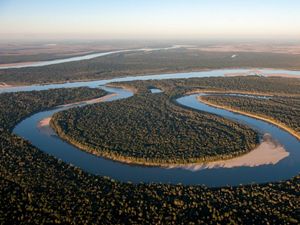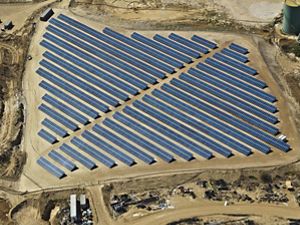New EPA Standards Set the Path for a Clean Energy Future
During Earth Week, the EPA announced new regulations and programs that will slash greenhouse gas emissions and speed up clean energy.
Media Contacts
-
Cody Sullivan
Associate Director of Communications, North American Climate Policy
The Nature Conservancy
Email: cody.sullivan@tnc.org -
Julia Leopold
Associate Director of Communications, Renewable Energy
The Nature Conservancy
Email: julia.leopold@tnc.org
On Thursday April 25, the U.S. Environmental Protection Agency announced a suite of new regulations and programs that will slash greenhouse gas emissions, speed up clean energy development and reduce hazardous pollution. Among those announcements was the EPA’s new carbon standard for existing coal-fired and new natural gas-fired power plants. This new standard lays out the timeline for these power plants to adopt proven, cost-effective, modern technologies to reduce climate pollution.
Quote: Laura Brannen
By setting carbon standards for new and existing coal- and gas-fired power plants, the EPA is aligning the energy industry with our national goal to reach 100% clean power by 2035.
“The EPA’s new power plant greenhouse gas emissions rule is a long time coming and we’re excited to see it now finalized. By setting carbon standards for new and existing coal- and gas-fired power plants, the EPA is aligning the energy industry with our national goal to reach 100% clean power by 2035,” said Laura Brannen, federal climate policy lead at The Nature Conservancy. “Energy utilities and regulators now have clarity on what standards they’ll be held to so that they can more confidently plan for and invest in our clean energy future. This will help enable the clean energy industry to grow in ways that will continue to support communities and tackle climate change.
“We’re pleased to see that this new standard took into consideration and adopted some of the recommendations that The Nature Conservancy made with our partners at the Clean Air Task Force and Natural Resources Defense Council. We’re committed to tackling climate change and this goes a long way towards meeting the U.S.’s climate goals and the goals of the internationally agreed upon Paris Agreement. We look forward to working with the U.S. government to make sure that these new standards are implemented in ways that will benefit our communities and nature as well as the climate.”
The Nature Conservancy is a global conservation organization dedicated to conserving the lands and waters on which all life depends. Guided by science, we create innovative, on-the-ground solutions to our world’s toughest challenges so that nature and people can thrive together. We are tackling climate change, conserving lands, waters and oceans at an unprecedented scale, providing food and water sustainably and helping make cities more sustainable. Working in more than 70 countries and territories, we use a collaborative approach that engages local communities, governments, the private sector, and other partners. To learn more, visit nature.org or follow @nature_press on Twitter.



